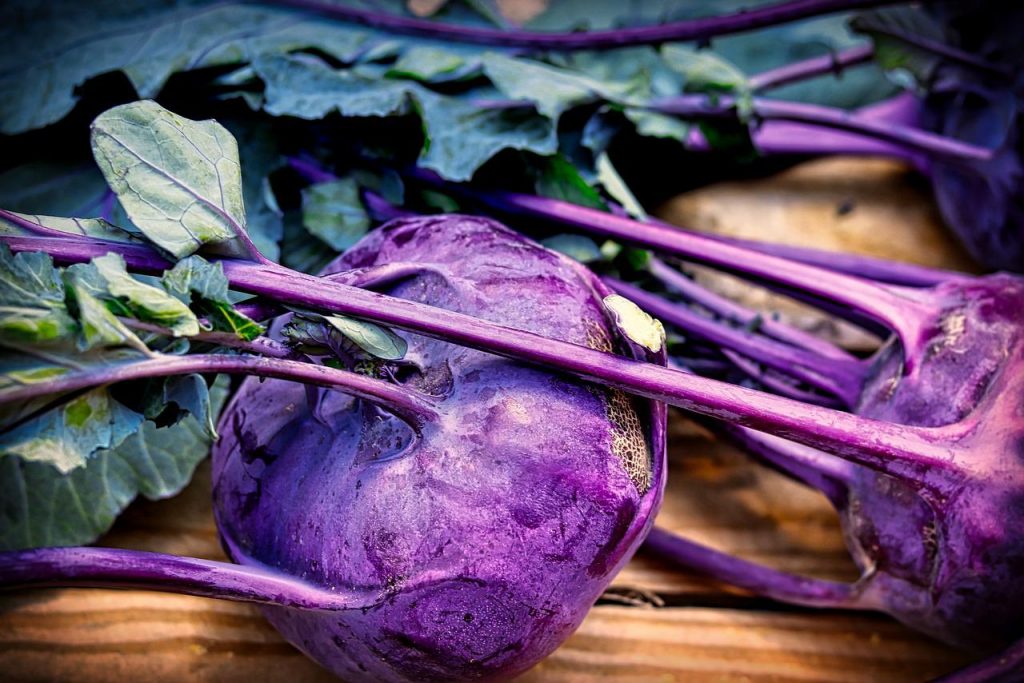Article: Traudi K (COGS Quarterly – August 1993)
Kohlrabi is a cool weather crop but tolerates heat well. Although available plants or seeds are mostly of the purple variety, the white Vienna is the one I like best. It seems to be softer and sweeter. But if there is trouble with the white cabbage butterfly, it is safer to grow the purple kind – its leaves seem to be harder and not as much affected by this pest.

Preparing the soil is the key. A rich sandy soil; with lots of organic matter encourages rapid growth with tender tasty Kohlrabies. Plant in a bed 1.5m by 60cm which gives just the right spacing for 14 to 16 plants. Plants become spindly and bitter if spaced too closely. Plant two or three seeds 1.5cm deep in each spacing then thin to the strongest plants after they come up in a week or ten days.
When the plants are 10-15cm tall mulch the bed with grass clippings, sawdust or compost. Fertilise heavily as all cole crops respond to rich ground and the Kohlrabi is no exception. Rapid growth is essential for texture and flavour.
Kohlrabi can be a substitute for cabbage, turnip or even apple. Its sweet stem (which can be harvested when it is between the size of a golf ball and a tennis ball) can be steamed, sliced or cubed and served with seasoned butter. Combine cubed Kohlrabi with carrots and peas. Grate fresh Kohlrabi for coleslaw, or eat it slivered in salads, peeled and sliced for dips or eat it like an apple. Serve au gratin or creamed. Add it to soups or stews or stir fry in Chinese dishes.
Fresh Kohlrabi has more vitamin C than orange juice. It is also a good source of calcium, phosphorous and potassium.
